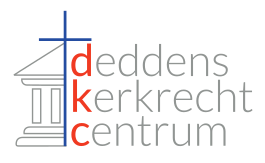In recent years, the integration of smart technologies into climate control systems has transformed how we approach energy management. With innovative solutions at our fingertips, facilities can experience a significant reduction in energy consumption and costs. These advancements not only promote sustainability but also enhance comfort levels within any space.
By streamlining operational processes and utilizing data analytics, modern climate management systems provide a more refined approach to temperature regulation. This shift allows for precise adjustments that respond in real-time to occupancy and weather changes, thereby optimizing performance without unnecessary energy expenditure.
As organizations increasingly prioritize energy efficiency, the combination of intelligent systems and proactive energy management strategies has proven to be a winning formula. The result is an environment that supports both productivity and environmental responsibility, aligning with contemporary goals of sustainability.
Leveraging Smart Thermostats for Optimal Temperature Control
Smart thermostats play a pivotal role in enhancing climate control systems, offering advanced features that contribute to significant cost savings and improved temperature regulation.
These devices provide:
- Remote access to system settings via smartphones or tablets, allowing users to adjust temperatures from anywhere.
- Adaptive learning algorithms that observe user preferences and automatically adjust settings to maximize comfort while minimizing energy consumption.
- Integration with other home automation systems, promoting seamless operation and energy management across different devices.
Through real-time system monitoring, smart thermostats can detect and report inefficiencies, enabling timely maintenance and adjustments. This proactive approach helps in:
- Identifying unusual energy use patterns that can signal system issues.
- Providing insights on usage trends, which can guide homeowners in making informed decisions about their heating and cooling needs.
By utilizing these advanced thermostats, households not only achieve optimal temperature control but also contribute to a reduction in their environmental footprint, making them an attractive option for homeowners aiming for sustainability.
Integrating HVAC Systems with Building Management Software
Combining heating, ventilation, and air conditioning systems with building management software offers significant advancements in energy management. Such integration facilitates streamlined communication between various systems, allowing for real-time data exchange and coordination of operations.
This synergy enables facility managers to monitor and adjust settings based on occupancy levels and environmental conditions. By analyzing data trends, users can identify areas where adjustments may lead to substantial cost savings and improved energy allocation.
Additionally, integrated software solutions often provide predictive maintenance alerts, which can help in preventing system failures and prolonging the lifespan of equipment. Through centralized monitoring, maintenance tasks can be planned proactively rather than reactively, further contributing to operational savings.
The use of advanced analytics within building management systems enhances the capability to optimize performance. This leads to reduced energy consumption while maintaining comfortable indoor climates. As a result, occupants benefit from improved air quality and consistent temperatures, which positively impacts productivity.
Overall, the fusion of HVAC systems with sophisticated management software represents a forward-thinking strategy that boosts operational capacity and drives greater value from resources. Enhanced visibility and control ensure that facilities operate at peak performance, translating data insights into actionable efficiencies.
Utilizing Predictive Maintenance to Reduce Downtime
Implementing predictive maintenance in climate control systems significantly minimizes unplanned interruptions. By leveraging advanced system monitoring tools, operators can track the health of their equipment in real-time, allowing for timely interventions before a breakdown occurs.
Data analytics provides insights into equipment performance, highlighting trends that signal potential failures. With this proactive approach, businesses can plan maintenance activities during off-peak hours, leading to substantial cost savings and greater operational continuity.
Additionally, optimizing energy management through predictive techniques allows for adjustments based on system performance analytics. This means reduced energy consumption during peak times, translating directly into lower utility bills and a smaller carbon footprint.
For more information on enhancing your system through innovative strategies, visit https://lamechanicalac.com/.
Implementing IoT Sensors for Real-Time Performance Monitoring
The integration of smart technology through IoT sensors significantly advances control over environmental systems. These sensors provide continuous data streams, enabling precise monitoring of critical parameters such as temperature, humidity, and air quality. This capability allows for immediate adjustments to be made, ensuring systems operate within optimal ranges.
Real-time data collection empowers building managers to make informed decisions, enhancing energy management. By analyzing sensor-generated metrics, inefficiencies can be identified without delay, leading to prompt corrective actions. Such proactive measures translate into significant cost savings by minimizing energy waste and extending the lifespan of equipment.
Furthermore, IoT sensors facilitate improved communication among various systems, allowing them to work in harmony. This interconnectivity not only optimizes performance but also contributes to a comprehensive understanding of overall system dynamics. As a result, facilities can achieve a higher standard of operational excellence, making a substantial impact on their energy consumption and operational costs.
